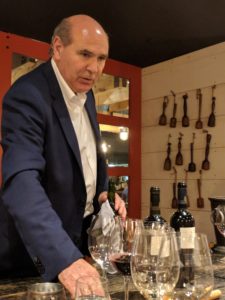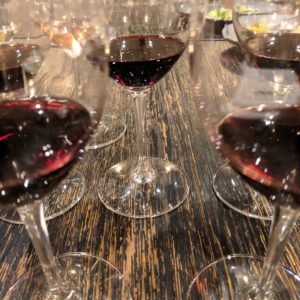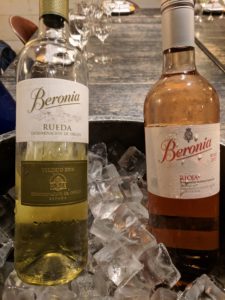
Back in 1973, a group of friends (in Spain) realized that they loved good food and wine and decided to embark on a joint venture in making wine for themselves. Once they got started, they had way too much wine, so they began gifting the wine to business colleagues and selling to local restaurants.
But, their production levels were still too high for personal consumption, prompting them to look for a commercial partner. In 1982, the group crossed paths with Sherry producer (and wine company) Gonzalez Byass and soon entered into a partnership with them, enabling Bodegas Beronia to grow into a successful, international brand.
Concurrent with the partnership, Matias Calleja joined the team as winemaker and has been with Bodegas Beronia ever since. This year, Calleja will celebrate his 37th vintage with the company, having completed only one harvest elsewhere (in Tarragona, his first). Yet, despite his lengthy tenure, he is still enjoying his post and having fun.
Moreover, Calleja has had a lasting influence on Bodegas Beronia in establishing the winery’s distinctive style. In this regard, he has been at the forefront of how best to impart oak into the wine.

As a wine that requires lengthy aging, Rioja has always been about wood and, in particular, about American oak; there was no use of French oak until the 1970s. Once both types of wood were in play, for many winemakers, it was a matter of determining the best blend of American and French barrels.
American oak imparts cocoa, mocha and a sweeter note to the wine, while French oak gives more spice, clove, vanilla and pepper notes. Calleja initially tried aging some of the wine in American oak and some in French oak and then, ultimately, blending the wine together. But, the results were less than satisfactory. Instead, he had the brainchild to blend the cask itself; all of the barrel staves are made from American oak (representing about 65% of the barrel), while the top and bottom are made from French oak.
Yet, in spite of all this emphasis on oak, he is adamant that the fruit comes first and the oak must be secondary. So, while it may seem that it is all about that bass (aka the wood influence); it’s actually all about the fruit!
Calleja’s hybrid barrels are primarily used for the Crianza and Reserva levels of his Rioja, while the Gran Reserva spends 26-28 months in French barrels, since French oak is better for longer-aged wines. As Calleja explained, “It respects the fruit better.” Having the opportunity at a recent press lunch to taste through barrel samples of the same wine aged in three different barrel types was extremely instructive in understanding how the oak shows up in the wine.

In addition to its traditional Riojan reds, Bodegas Beronia also produces a Rueda ($13 SRP) and a Rosé (~$13). For the Rueda, the harvest is intentionally staggered and lees contact is undertaken, both of which add fullness to the wine. Plus, the fermentation temperature is carefully controlled. The result is a wine with good aromatics in addition to a rich and round palate, with medium+ body and freshness. The winery’s rosé has recently undergone a makeover due to demand from the market (the U.S. in particular), evolving from a dark-colored Tempranillo to one with a more Provençal style. The new wine brings together Tempranillo and Garnacha, with only three hours of skin contact, producing a more savory, delicate and drier wine than their previous version, with melon, peach and herbal notes.
RIOJA TASTING NOTES

Bodegas Beronia Reserva 2013, Rioja Spain, $20.00
As a Reserva-level Rioja, this wine was aged for 20 months in hybrid barrels, before spending an additional two years in bottle. The wine offers up strawberry, black cherry, oak, vanilla and spice aromas with juicy fruit, bright acidity and ripe tannins on the medium+-bodied palate.
Bodegas Beronia Gran Reserva 2009, Rioja Spain, $30.00
Aged for 28 months in French oak, this wine displays beautiful fresh and dried floral aromas along with strawberry, clove and oak, which persist on the palate. It has lovely acidity, a full body and long length.
